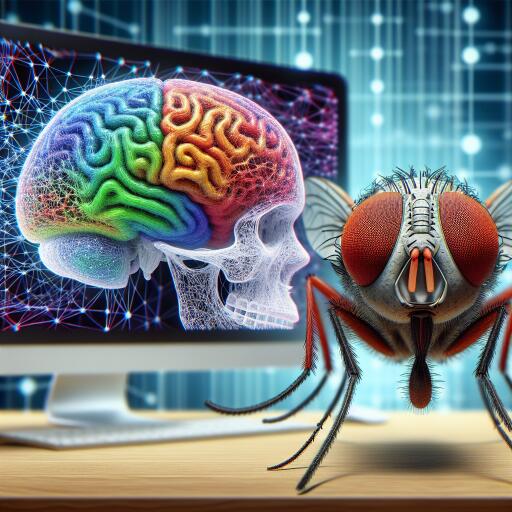AI Models Mimic Fruit Fly Brains to Enhance Efficiency and Understanding
In a groundbreaking development, scientists have engineered an artificial intelligence (AI) system inspired by the cognitive processes of a fruit fly. This innovation promises not just a leap towards more efficient technologies but also ushers in new perspectives on neural information processing.
The fascination with fruit flies comes from their minimal yet remarkably effective neural setup. Despite having only around 100,000 neurons—a stark contrast to the human brain’s approximately 86 billion—these insects exhibit complex behaviors such as flight, predator evasion, and mating, all while consuming very little energy.
Jakob Macke from the University of Tubingen highlights the significance of understanding fruit fly efficiency. “With a small and energy-efficient brain, it’s able to survive and perform complex computations,” Macke notes. This efficiency is something modern technology, with its billion-transistor processors and high energy consumption, aspires to replicate.
To unravel how fruit flies manage such feats with limited neural resources, the research team dove into studies mapping out the fruit fly’s brain connections, or connectome. This provided a comprehensive layout of neural pathways, essentially a roadmap indicating potential information flow through the brain. However, capturing the specifics of this flow proved challenging. “It tells you who’s connected to who…but it doesn’t tell you which of these travels are actually taken by the system,” Macke explains.
The solution? Simulate a fruit fly’s brain. By building accurate models on computers, scientists hoped to mimic and understand the neural activities of these insects. The team, including Srini Turaga from the Howard Hughes Medical Institute’s Janelia Research Campus, concentrated on recreating the brain circuits responsible for motion detection. They developed an AI system that, through observing movies that prompt motion responses in real fruit flies, learned to detect motion accurately and efficiently, mirroring a fruit fly’s approach.
This innovation is more than just a technical marvel; it provides a new tool for neuroscience. “If you know the connectome…we can use AI to predict neural activity for every single neuron,” Turaga states, underpinning the model’s capability to behave as a real fly brain does. Such advancements could dramatically accelerate the understanding of how brains process information across various systems, not limited to motion detection.
The implications of this research extend far into both the scientific and technological realms. Ben Cowley, a computational neuroscientist at Cold Spring Harbor not involved in the study, endorses the model’s potential. “I’m using this model in my own work…it beautifully makes some predictions about what we should expect to see,” Cowley shares, highlighting the model’s accuracy and utility in predicting neural behaviors without the need for initial experimentation.
This model not only paves the way for further neuroscience research but also addresses a significant challenge in the AI field: energy efficiency. The quest to make AI systems more power-efficient, emulating the remarkable efficiency of the fruit fly’s brain, could lead to transformative changes in technology and our understanding of intelligence—both artificial and biological.
The intriguing blend of biology and technology showcased in this research underscores a future where understanding the smallest of brains could lead to the biggest of advancements in AI. As scientists and technologists continue to draw inspiration from the natural world, the possibilities for innovation seem as limitless as the complexities of the brains they study.









